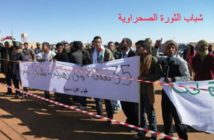By ERIC SCHMITT
WASHINGTON — The United States military is preparing to establish a drone base in northwest Africa so that it can increase surveillance missions on the local affiliate of Al Qaeda and other Islamist extremist groups that American and other Western officials say pose a growing menace to the region.
For now, officials say they envision flying only unarmed surveillance drones from the base, though they have not ruled out conducting missile strikes at some point if the threat worsens.
The move is an indication of the priority Africa has become in American antiterrorism efforts. The United States military has a limited presence in Africa, with only one permanent base, in the country of Djibouti, more than 3,000 miles from Mali, where French and Malian troops are now battling Qaeda-backed fighterswho control the northern part of Mali.
A new drone base in northwest Africa would join a constellation of small airstrips in recent years on the continent, including in Ethiopia, for surveillance missions flown by drones or turboprop planes designed to look like civilian aircraft.
If the base is approved, the most likely location for it would be in Niger, a largely desert nation on the eastern border of Mali. The American military’s Africa Command, or Africom, is also discussing options for the base with other countries in the region, including Burkina Faso, officials said.
The immediate impetus for a drone base in the region is to provide surveillance assistance to the French-led operation in Mali. “This is directly related to the Mali mission, but it could also give Africom a more enduring presence for I.S.R.,” one American military official said Sunday, referring to intelligence, surveillance and reconnaissance.
A handful of unarmed Predator drones would carry out surveillance missions in the region and fill a desperate need for more detailed information on a range of regional threats, including militants in Mali and the unabated flow of fighters and weapons from Libya. American military commanders and intelligence analysts complain that such information has been sorely lacking.
The Africa Command’s plan still needs approval from the Pentagon and eventually from the White House, as well as from officials in Niger. American military officials said that they were still working out some details, and that no final decision had been made. But in Niger on Monday, the two countries reached a status-of-forces agreement that clears the way for greater American military involvement in the country and provides legal protection to American troops there, including any who might deploy to a new drone base.
The plan could face resistance from some in the White House who are wary of committing any additional American forces to a fight against a poorly understood web of extremist groups in North Africa.
If approved, the base could ultimately have as many as 300 United States military and contractor personnel, but it would probably begin with far fewer people than that, military officials said.
Some Africa specialists expressed concern that setting up a drone base in Niger or in a neighboring country, even if only to fly surveillance missions, could alienate local people who may associate the distinctive aircraft with deadly attacks in Pakistan, Somalia and Yemen.
Officials from Niger did not respond to e-mails over the weekend about the plan, but its president, Mahamadou Issoufou, has expressed a willingness to establish what he called in a recent interview “a long-term strategic relationship with the U.S.”
“What’s happening in northern Mali is a big concern for us because what’s happening in northern Mali can also happen to us,” Mr. Issoufou said in an interview at the presidential palace in Niamey, Niger’s capital, on Jan. 10, the day before French troops swept into Mali to blunt the militant advance.
Gen. Carter F. Ham, the head of the Africa Command, who visited Niger this month to discuss expanding the country’s security cooperation with the United States, declined to comment on the proposed drone base, saying in an e-mail that the subject was “too operational for me to confirm or deny.”
Discussions about the drone base come at a time when the French operation in Mali and a militant attack on a remote gas field in the Algerian desert that left at least 37 foreign hostages, including 3 Americans, dead have thrown a spotlight on Al Qaeda’s franchise in the region, Al Qaeda in the Islamic Maghreb, and forced Western governments and their allies in the region to accelerate efforts to combat it.
Senator Dianne Feinstein, a California Democrat who is chairwoman of the Intelligence Committee, said on CBS’s “Face the Nation” on Sunday that in the wake of Osama bin Laden’s death and the turmoil of the Arab Spring, there was “an effort to establish a beachhead for terrorism, a joining together of terrorist organizations.”
According to current and former American government officials, as well as classified government cables made public by the group WikiLeaks, the surveillance missions flown by American turboprop planes in northern Mali have had only a limited effect.
Flown mainly from Ouagadougou, the capital of Burkina Faso, the missions have faced stiff challenges as militant leaders have taken greater precautions in using electronic communications and have taken more care not to disclose delicate information that could be monitored, like their precise locations.
General Ham said in an interview on his visit to Niger that it had been difficult for American intelligence agencies to collect consistent, reliable intelligence about what was going on in northern Mali, as well as in other largely ungoverned parts of the sub-Saharan region.
“It’s tough to penetrate,” he said. “It’s tough to get access for platforms that can collect. It’s an extraordinarily tough environment for human intelligence, not just ours but the neighboring countries as well.”
The State Department has been extraordinarily wary of allowing drones to operate in the region, fearful of criticism that the United States is trying to militarize parts of Africa as it steps up its campaign to hunt down Qaeda-linked extremists in Somalia, as well as those responsible for the Sept. 11, 2012, attack on the diplomatic mission in Benghazi, Libya, that killed Ambassador J. Christopher Stevens and three other Americans.
American drones regularly conduct surveillance flights over Somalia and occasionally launch airstrikes against people suspected of being members of the Shabab, a militant group linked to Al Qaeda. General Ham, who will be retiring from his command this spring after nearly 40 years in the Army, has been warning that the United States needs more and better surveillance tools in Africa to track the growing threats there.
“Without operating locations on the continent, I.S.R. capabilities would be curtailed, potentially endangering U.S. security,” General Ham said in a statement to the House Armed Services Committee last March. “Given the vast geographic space and diversity in threats, the command requires increased I.S.R. assets to adequately address the security challenges on the continent.”
<nyt_update_bottom>
.







